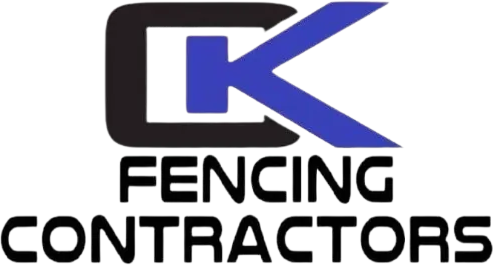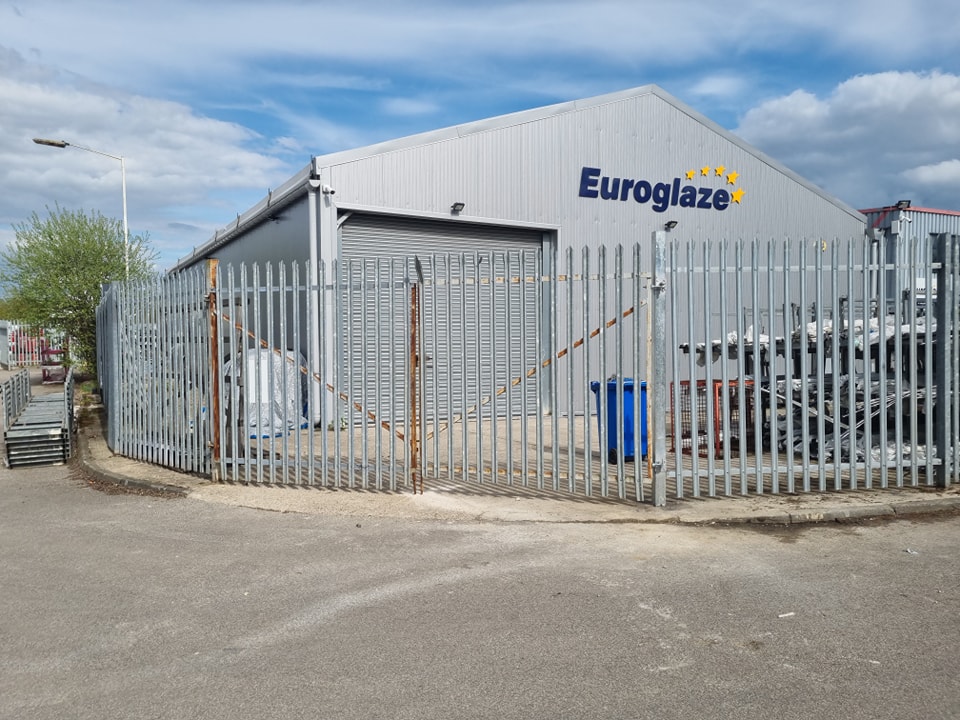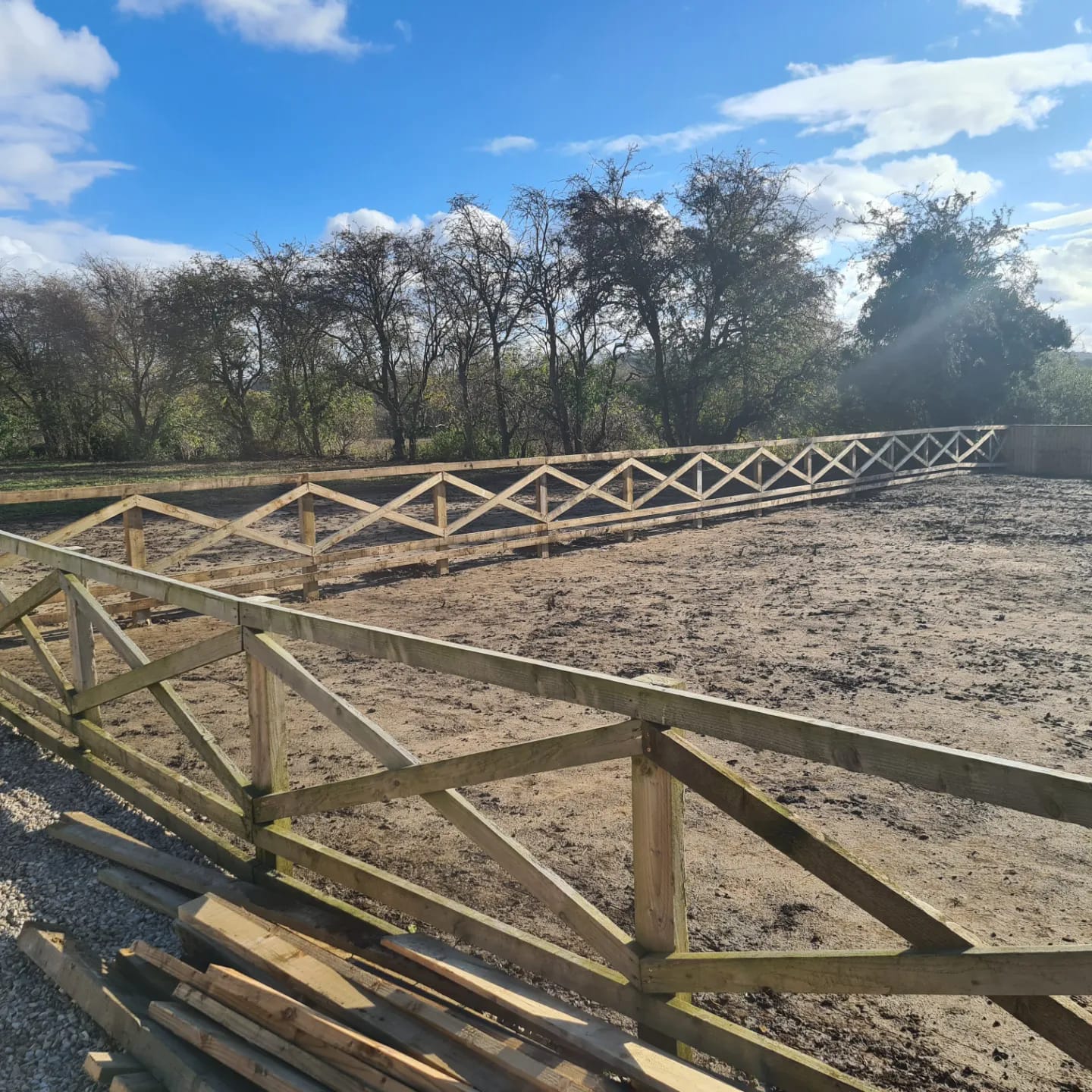Securing a property is a primary concern for both homeowners and businesses. Fences play a critical role in deterring unauthorised access, reducing theft, and protecting valuable assets. In Yorkshire and nationwide, customers demand fencing solutions that not only look appealing but also offer robust security features. Legal liability, zoning restrictions, and regulatory compliance are important factors that affect fence design and functionality. This article explains the best types of security fences and the key security features found in modern systems. It also discusses how security needs differ between residential, commercial, and industrial properties, as well as how integrated systems can maximise protection and offer long-term cost savings. Real-world examples and detailed comparisons by CK Fencing Contractors, a reputable family business in Pontefract, illustrate the importance of selecting the right features to safeguard critical infrastructure against theft, vandalism, and criminal activity.
The following sections explore various fence types, key security enhancements, cost trends, and factors that influence feature selection. By the end, readers will have a comprehensive guide to support informed decision-making for their fencing needs.
Transitioning into the main points, the article begins with an evaluation of the best fence types for security.
What Are the Best Types of Fences for Security?
Determining the best fence type for a security application depends on material strength, durability, and design features that deter criminals. Each fence type has distinct advantages and disadvantages based on the environment and threat level.
How Does Chain-Link Fencing Enhance Security?
Chain-link fences are widely used for their affordability and transparency, offering unobstructed views of the perimeter. The woven wire design creates a physical barrier, and when manufactured with high-tensile steel, these fences resist cutting and climbing. Enhancements such as barbed or razor-wire tops further deter intruders. Additionally, chain-link fences are low maintenance when properly coated against corrosion. Their open design also allows clear surveillance camera views over the entire boundary, and their modular nature makes retrofitting additional security features simple.
What Security Advantages Does Ornamental Iron Fencing Offer?
Ornamental iron fences combine high aesthetic appeal with strong physical protection. Their heavy gauge construction and intricate designs form a formidable barrier against intrusion. Custom anti-climb features like pointed finials and narrow vertical slats further discourage scaling. Their inherent resistance to damage and vandalism, when maintained through galvanisation, makes these fences durable in harsh weather. Many homeowner associations favour them for both longevity and the enhanced property value they offer.
How Can Wood Fencing Provide Effective Security?
Wood fences offer a traditional appearance with effective security when built with high-quality, treated timber. Solid panels make climbing and scaling difficult and can incorporate anti-climb designs with vertical boards and narrow gaps to minimise footholds. Wood fences can also deliver complete privacy by blocking outside views and reducing opportunities for external surveillance. However, maintenance is crucial; untreated or poorly maintained wood can deteriorate and weaken security. With proper sealing and regular upkeep, wooden fences provide a secure, cost-effective, and visually pleasing perimeter.
Why Choose Composite Fencing for Security Purposes?
Composite fences combine the durability of plastic with the look of wood, resulting in a secure, maintenance-free option. Resistant to rot, insect infestation, and fading, composite materials maintain their security features longer than traditional wood. They are engineered to be impact resistant and may include integrated steel reinforcements for added strength. Composite fences also allow for greater height and design versatility while including anti-climb tops and smooth surfaces that reduce the risk of breaches. With low long-term maintenance costs and guaranteed performance, composite fencing is an attractive option for many properties.
What Key Security Features Should You Look for in Fencing Solutions?
A comprehensive fencing system integrates multiple security features to create a robust barrier. From surveillance to physical deterrents, understanding these features helps plan a security strategy that matches each property’s needs.
How Do Security Cameras Integrate With Fencing Systems?
Security cameras are often mounted alongside fences to provide continuous remote monitoring of the perimeter. Placed at strategic points, these cameras—equipped with night vision and infrared technology—capture clear visuals even in low light. When connected to a central monitoring system, cameras offer real-time alerts and recorded footage, which supports both rapid response and legal liability claims. Their visible presence also acts as a deterrent to potential intruders.
What Are Access Control Systems and How Do They Work With Fences?
Access control systems restrict and monitor entry into secure areas. Using key cards, biometric identifiers, or keypad codes, these systems grant access only to authorised individuals through gates or doors integrated with the fence. When combined with alarm systems and video surveillance, access control offers a multi-faceted approach to property security. This is particularly beneficial in commercial settings, where strict control and detailed logs of entry and exit are required for both safety and regulatory compliance.
How Do Alarm Systems Enhance Fence Security?
Alarm systems add an immediate, audible deterrent by using sensors such as motion detectors, vibration sensors, and break-in detectors to monitor the fence. When a breach is detected, a loud alarm sounds, discouraging intruders and alerting security personnel and neighbours. Frequently linked with automated calls to security services or law enforcement, alarm systems transform a passive barrier into an active defense mechanism that reinforces overall security.
What Are Anti-Climb Features and Why Are They Important?
Anti-climb features are specifically engineered to prevent intruders from scaling fences. These include overhangs, pointed tops, and specially designed panels that leave few hand or footholds. Such features not only reduce the physical possibility of breach but also serve as a psychological deterrent. By increasing the difficulty and exposure time during an attempt, anti-climb designs provide additional time for detection by surveillance cameras or patrols, significantly reducing overall risk.
How Does Perimeter Lighting Improve Fence Security?
Perimeter lighting is a simple and effective feature that illuminates the entire property boundary. It enhances night-time visibility, discouraging intruders from approaching undetected. Often equipped with motion-activated sensors to save energy, proper lighting ensures that any movement is immediately highlighted. Furthermore, lighting supports the performance of integrated security cameras by providing clear images in low-light conditions, acting in concert with other security features to lower the risk of breaches.
How Do Security Fencing Needs Differ for Residential, Commercial, and Industrial Properties?
Security fencing requirements vary depending on property type. The design, materials, and added security measures must be tailored to meet the distinct needs of residential, commercial, and industrial properties.
What Security Features Are Essential for Residential Fencing?
Residential properties typically prioritise privacy, aesthetics, and effective deterrents against break-ins. Homeowners often prefer fences that offer complete visual privacy combined with robust anti-climb features. In these applications, integrated elements such as discrete alarm systems, surveillance cameras, and perimeter lighting are crucial. While chain-link may be less popular for its appearance, ornamental iron, wood, or composite options balance security with visual appeal. Residential systems also incorporate access control measures at entry points to ensure that only residents and approved visitors can enter.
Which Security Solutions Best Protect Commercial Properties?
Commercial properties face higher risks from theft, vandalism, and unauthorised access. As a result, fencing systems here are usually paired with comprehensive surveillance and advanced access control mechanisms. In commercial settings, physical barriers are further reinforced by rugged materials, anti-climb elements, and motion sensors. Regulatory compliance requirements and legal liability concerns mean that the technology used must integrate seamlessly with monitoring systems and allow for scalable upgrades in the future.
What Are the Security Priorities for Industrial Fencing Solutions?
Industrial properties require robust systems due to the high value of assets and large areas to protect. Security here focuses not only on preventing theft but also on safeguarding staff and critical infrastructure. Industrial fences typically use high-strength materials such as steel and include advanced access control systems, perimeter surveillance, and robust alarms linked to central monitoring stations. Standard anti-climb and anti-cut technologies, along with designs that withstand environmental challenges like extreme weather or chemical exposure, are essential for ensuring long-term reliability.
How Can Integrated Security Systems Maximise Fence Protection?
Integrating various security components with fencing creates a unified defense strategy. Systems that combine surveillance, access control, and alarms work together to detect and respond to breaches instantly, resulting in a more efficient and manageable security posture.
What Are the Benefits of Combining Fencing With Surveillance Cameras?
Combining fences with surveillance cameras provides continuous monitoring and a visual record of events. High-resolution cameras with infrared capabilities ensure clear images in low-light conditions, enhancing both real-time monitoring and evidence collection during incidents. The visible presence of cameras also deters potential intruders. Continuous data analysis from these systems can optimise the positioning and performance of both the fence and its integrated surveillance.
How Does Access Control Integration Improve Perimeter Security?
Integrating access control with fencing strictly regulates entry by allowing only authorised personnel access. Modern biometric or key-card systems coupled with detailed logs streamline real-time monitoring and enable swift intervention in case of suspicious activities. This integration not only improves overall security but also simplifies compliance documentation and operational management in areas with multiple access points.
Why Is Alarm System Integration Critical for Security Fencing?
Alarm systems provide a critical layer of active defense by immediately alerting property owners and security teams to breaches. Integrated sensors trigger alarms that are often connected to automated notification systems, ensuring rapid response by law enforcement or on-site security. This active alert system transforms the fence from a passive barrier into a dynamic security solution that significantly enhances overall property protection.
What Factors Should You Consider When Choosing Security Features for Your Fence?
Choosing the right security features involves several factors, including property type, budget constraints, and the need for professional installation and ongoing maintenance. A thorough evaluation ensures that the fencing system not only meets immediate security needs but also remains cost-effective over its lifecycle.
How Does Property Type Influence Security Feature Selection?
Different property types—residential, commercial, or industrial—demand varying levels of security features. Residential properties may require a focus on privacy and aesthetic appeal along with discreet yet effective access control. In contrast, industrial sites might demand rugged, high-strength materials and advanced integrated systems to protect critical operations. The overall design should reflect the intended use, include necessary regulatory compliance, and address the specific security risks of the property.
What Is the Impact of Budget on Security Fencing Choices?
Budget considerations influence the selection of materials and integrated technologies. High-end systems with state-of-the-art surveillance, biometric access control, and advanced alarms come at a premium, but they often reduce long-term costs by lowering maintenance expenses and insurance premiums. A well-planned budget must account for both initial installation and ongoing operational costs, making a higher upfront investment justifiable when it enhances durability and overall protection.
How Important Is Professional Installation and Maintenance?
Professional installation ensures that all integrated security components function correctly, minimizing weak points that intruders could exploit. Regular maintenance is essential to uphold safety standards, preserve warranties, and ensure reliability over time. Skilled installers can accurately align and calibrate cameras, alarms, and access control systems with the fence, while routine maintenance prolongs the lifespan and performance of the entire security setup.
How Do Security Features Affect the Cost of Fencing Solutions?
The integration of security features inevitably increases upfront costs; however, these investments often lead to long-term savings by reducing theft, vandalism, and damage. Understanding typical expenses helps property owners weigh initial expenditures against future benefits.
What Are Typical Costs for Security-Enhanced Fencing?
Costs for security-enhanced fencing vary with material, design, and the level of additional technology. A standard chain-link fence is relatively inexpensive, but adding high-tensile materials, anti-climb features, and protective coatings can raise the price. Ornamental iron and composite fences typically command higher prices due to their enhanced durability and design qualities, with costs generally ranging from £40 to £100 per linear metre.
How Does Adding Access Control and Surveillance Impact Budget?
Adding technological integrations such as biometric access systems and high-resolution surveillance cameras increases the overall project cost. Although these upgrades can add several hundred to several thousand pounds to the installation, they significantly enhance security and reduce potential losses due to theft or unauthorised access, often proving cost-effective in the long run.
Are There Long-Term Savings From Investing in Security Features?
Yes, long-term savings can result from investing in robust security features. Despite higher initial costs, benefits such as reduced maintenance, lower insurance premiums, and fewer damage or theft incidents can make the overall investment economically advantageous. Preventative measures decrease the need for frequent repairs and help maintain property value, providing substantial fiscal benefits over time.
What Are the Latest Trends and Innovations in Security Fencing?
The security fencing industry is evolving with technological advancements and innovative materials that transform traditional fences into smart, integrated systems. These modern solutions not only enhance protection but also offer improved aesthetics and functionality.
How Is Smart Technology Changing Security Fencing?
Smart technology is revolutionising fencing by enabling real-time monitoring, remote control, and automated responses via IoT devices. Modern fences now include sensors that detect vibrations, motion, and breaches, which communicate with central systems that trigger alarms and notify property owners or emergency services immediately. This remote connectivity, managed through mobile apps and smartwatches, significantly reduces response times and enhances overall security management.
What Are Emerging Materials and Designs for Enhanced Security?
Innovative materials such as new composite blends, advanced metals with anti-corrosion treatments, and resilient polymer mixes are setting new standards in security fencing. These materials not only improve durability and resistance to weathering, but also provide superior visual appeal. Modular designs that combine solid panels with integrated security technologies allow for easy upgrades and enhanced protection without compromising style. Features like laser-cut patterns in ornamental iron reduce foothold opportunities while maintaining elegant designs.
How Are Environmental and Aesthetic Factors Integrated With Security?
Modern security fencing increasingly balances strong protection with visual appeal and environmental sustainability. Customisable finishes, environmentally friendly materials, and low-profile lighting systems ensure that security fences complement their surroundings while offering robust protection. This integration not only boosts property value but also meets community and ecological standards by using recyclable or sustainable materials.
Table: Comparison of Security Fencing Solutions
Below is a summary table comparing key features and benefits of various security fencing options.
| Fence Type | Material | Key Security Feature | Estimated Cost per Metre | Maintenance Level |
|---|---|---|---|---|
| Chain-Link | High-tensile steel | Anti-climb with barbed wire & camera integration | £40 – £60 | Low |
| Ornamental Iron | Cast iron/Steel | Decorative anti-climb design, high durability | £70 – £100 | Moderate |
| Wood | Treated timber | Solid panels with privacy and anti-climb features | £50 – £80 | High |
| Composite | Polymer/Steel | Restrictive design with integrated reinforcements | £60 – £90 | Low |
This table summarises the primary differences between major security fencing solutions and serves as a quick reference for material types, security features, average costs, and maintenance requirements.
List: Key Attributes of Integrated Fencing Security
Below is an essential list detailing key attributes that an integrated fencing security system should include:
- Continuous Surveillance – Real-time camera integration ensures every corner of the perimeter is monitored, increasing response times and deterring criminal activity.
- Advanced Access Control – Biometric or key-card systems regulate entry, ensuring only authorised individuals gain access.
- Robust Alarm Systems – Immediate notifications and audible deterrents enhance security responses and support incident investigations.
- Anti-Climb Design – Features such as pointed tops and narrow gaps minimise climbing hazards, making breaches difficult.
- Perimeter Lighting – Strategic lighting enhances night-time visibility, supporting surveillance and deterring intruders.
Final Thoughts
A well-designed security fencing system is essential for protecting both residential and commercial properties. By selecting the appropriate fence type—whether chain-link, ornamental iron, wood, or composite—and integrating crucial security features like surveillance, access control, and alarm systems, property owners can greatly enhance their perimeter security. The latest trends in smart technology and innovative materials further optimise performance and cost-efficiency. With professional installation and regular maintenance, these systems provide long-term value, peace of mind, and robust protection against theft, vandalism, and criminal activity.
Frequently Asked Questions
Q: What makes chain-link fences popular for security purposes? A: Chain-link fences are popular due to their affordability, transparent design, and ability to incorporate anti-climb measures like barbed wire. Their high-tensile steel construction and compatibility with surveillance cameras make them effective for many commercial installations.
Q: How do access control systems improve fence security? A: Access control systems regulate entry through biometric or card-based authorisation, providing detailed logs of entries and exits. This helps prevent unauthorised access and enhances overall monitoring, especially in environments where security breaches can have serious consequences.
Q: Are ornamental iron fences worth the investment for residential use? A: Yes, ornamental iron fences are worth the investment because they combine high security with aesthetic appeal. Their robust construction, customised anti-climb features, and visual elegance also boost property value.
Q: Can integrated security systems reduce long-term costs in fence installations? A: Integrated systems can reduce long-term costs by minimising theft, vandalism, and damage. While the initial installation may be higher, benefits such as lower maintenance expenses and reduced insurance premiums can result in significant savings over time.
Q: What are the latest innovations in security fencing materials? A: Recent innovations include composite materials that mimic wood with enhanced durability, advanced metals with corrosion-resistant properties, and smart technology integrations like IoT-powered sensors. These improvements enhance protection while reducing maintenance needs.
Q: How does perimeter lighting enhance the overall security of a fence? A: Perimeter lighting illuminates the fence line, deterring intruders through clear visibility and supporting surveillance cameras by providing quality images in low light. Motion-activated systems also help in early detection and prompt response.
Q: What should customers consider when budgeting for security fencing? A: Customers should plan for both initial installation costs and long-term savings. Key considerations include material choice, integrated technologies such as cameras and access control, and the potential savings from lower maintenance fees, fewer breaches, and insurance incentives.




